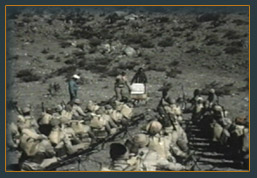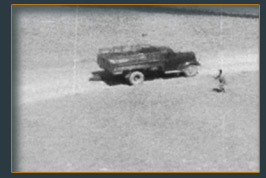

 |
 |
|
Page 1 - 2 - 3 - 4 - 5 - 6 - 7 - 8 - 9 In June 1960, Yeshe, along with an advance party, which included a 2-man radio team, made their way to Mustang. The majority of resistance fighters who had escaped from Tibet was now working on road camps in Sikkim. The first group of 300 was selected and gathered in Darjeeling where Lhamo Tsering had now set up the operational headquarters. From here they were sent on to Mustang. The plan went without a hitch, but soon rumours began to circulate among the road-workers that a new resistance army was in the process of being raised. Hundreds of men left the road camps and made their way to Darjeeling until their mysterious migration from Sikkim attracted the attention of the newspapers. The CIA, unhappy with this turn of events, withdrew support. Soon, more than 2000 men had gathered in Mustang, where Yeshe had neither the resources nor the supplies to support them. The situation became dire as winter approached. The men were reduced to boiling their leather shoes and saddlebags for sustenance. Several froze to death. But somehow, the hope that they would soon have the opportunity to go back to Tibet and fight their enemy kept their spirits up. |
   |
When the documents arrived in Washington, the CIA couldn’t believe its luck. Among other things, they provided the US intelligence community with its first hard evidence of the failure of Mao’s Great Leap Forward. Ken Knaus states categorically: "The Tibetan Document Raid was one of the greatest intelligence hauls in the history of the Agency. Here was an actual product of these operations that could be a demonstrable one, that was of benefit to the US Government. So that was of great help as far as getting or maintaining support for these kinds of operations was concerned." A second arms drop was made in December of that year in Mustang. From 1961 until 1964, numerous raids were carried out inside Tibet until the Sinkiang-Tibet Highway became virtually unusable. The Chinese were forced to build a detour further away from the border. |